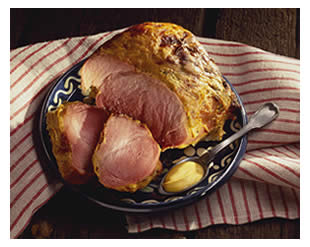Tourists and holiday-makers have become increasingly sophisticated, both in their choices of destination and in the kinds of experiences they seek. While package holidays still abound, with their carefully orchestrated and predictable offerings, more and more vacations are being planned, plotted and booked online by individuals with their own particular interests.
And one of the things that has always drawn these discriminating travelers is the opportunity to experience firsthand the unique delights of another culture. For many, the most important aspect of that culture is the regional cuisine. Including the vin de pays.
Unfortunately many such intrepid tourists are hampered in their adventures by the obvious language barriers. It is surprising how many restaurants, cafes and other gastronomic havens fail to provide any sort of translations on their menus. This reduces the hapless non-native speaker to either guessing [often with disastrous results], attempting to converse with a server whose language he does not share or…walking out. And, yes, that is a frequent consequence.
This language barrier can impact even more heavily on urban restaurants where menus are customarily posted outside for the perusal of passersby. Potential customers, unable to decipher what is on offer, will often simply keep walking.
There are a number of approaches for the translation of menus. The most frequent, and generally most unfortunate, is to have someone, painstakingly and literally, translate the name of each item. Unfortunately this is often impossible, as the name might have highly specific local or regional connotations with which a tourist would not be familiar. In some cases, of course, when the selection is simple and universal, there is no problem.
A much happier solution is to provide a brief description of the item, including main ingredients, method of preparation and such. This can also be used, with a few well chosen adjectives, as a means of enticement.
Surprisingly, it is not just small establishments that fail to take advantage of this simple and obvious means of luring in customers. I have been in many restaurants in Europe [in Vienna, Warsaw, Barcelona and Dublin, to name just a few], often hotel-based, that provide no menu translations whatsoever.
The translation of menus [and other food, hospitality and wine based literature] is definitely best done by professionals, preferably using a language services agency that has translators with much specific experience in the field. It is work which requires nuance and cultural knowledge.
It is also well worth considering taking advantage, at the same time, of copywriting services. Even for menu items, a well-honed and appetizing description can yield surprising returns, both in terms of the number of items ordered and repeat visits by the clientele.
A comprehensive and professional language services agency can coordinate all aspects of such a project, from the translation to copywriting and even DTP (Desktop publishing), if necessary. And it is an investment which can show immediate and gratifying returns.
Food, drink and catering translations for your international business
Food and wine have been characterized as the spice of life, the elements that give flavor and zest to our cultures, and yet, at times the tastes, textures and subtleties of our local dishes and beverages can be the most difficult to translate! At the same time, with improved communication transportation opportunities, it is more and more common to see elements from diverse cuisines on grocery shelves and in ethnic restaurants in all corners of the world.
Italian wine in South Africa, and South African wine in Rome! As a result of this enormous growth internationally, industries in this sector are growing internationally as well.
Pop Translation has used the experience and know-how of our expert food sector translators to help hotel, resort, restaurant and catering company owners worldwide in providing menus and describe their services to new foreign clients in their own languages, and has assisted producers and manufacturers around the globe in entering new markets with product documentation and marketing materials designed to attract and to inform in languages other than the original.

*The ‘Palette à la diable’ is a french dish.
Literally translated, it means « Deviled Pork Palette ». These ‘pork palettes’ are cured pork shoulder. ‘A la diable’ (deviled), means that they have been en-robed in mustard and loosely wrapped in a thin, fatty, sausage-like casing.
Bon appétit ! (Enjoy your meal!)



